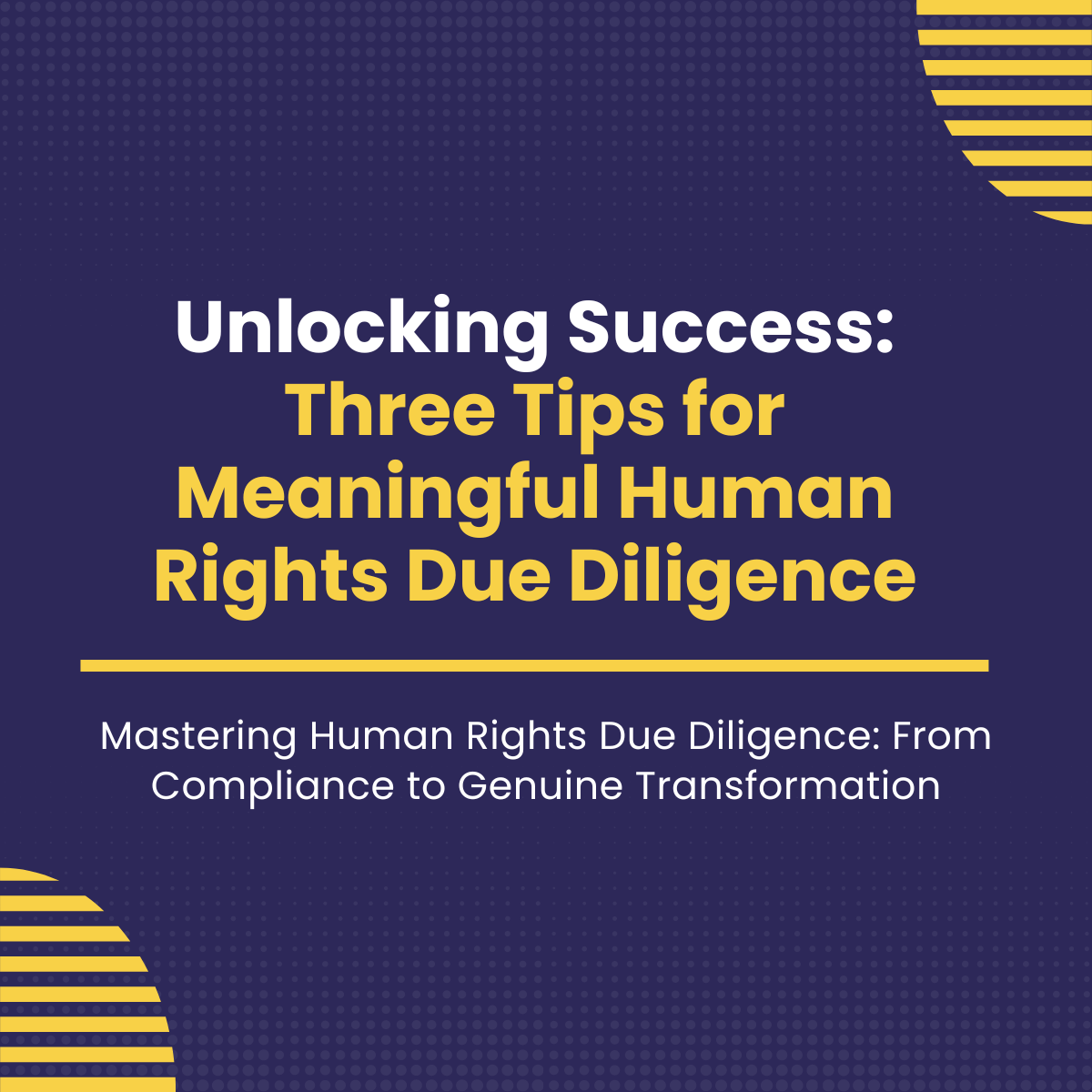In our previous blog, we explored the critical choice businesses face between the compliance route and meaningful transformation in human rights due diligence (HRDD). Now, it's time to move from theory to practice. This second instalment provides three essential tips to help you embark on that transformative journey. Learn how to ensure compliance while fostering sustainable growth, enhancing stakeholder relationships, and transforming your supply chain into a resilient and positive force. Dive into actionable strategies that can elevate your HRDD efforts from a mere regulatory exercise to a value-generating initiative.
Read MoreIn today's complex regulatory environment, businesses face increasing pressure to ensure responsible practices throughout their supply chains. This two-part blog series explores practical strategies for effective Human Rights Due Diligence (HRDD). In Part 1, we examine the regulatory changes and the choices businesses face between taking a compliance-driven route or opting for meaningful transformation. Discover how to navigate the crossroads between mere compliance and fostering genuine improvement for people and the environment while allowing businesses to thrive.
Read MoreMany brands are capturing data in their supply chains and are eager to talk about impact. But social impact is radically different from social compliance. What does that impact look like? And how can we build and measure it over time?
Read MoreThe relationship between supplier and buyers is shifting. What is the difference between a policing and a partnership model? And how can this shift be accelerated in the responses to COVID-19?
Read MoreWe work in the field of “responsible sourcing”. How, to date, have we all tried to carry out this responsibility?
Read MoreIt was refreshing to observe a change in tone and seriousness during the annual SEDEX conference.
Read MoreWe have long been whining about the shortcomings of auditing, but a widespread abandonment of the role of the auditor is not going to happen anytime soon. Why?
Read More






